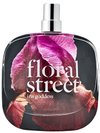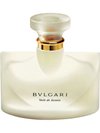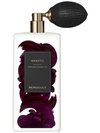Iris (Florentine/Tuscany)
Woody-green, powdery, soft, floral, refined, close to the scent of the violet, warm and persistent.
Best paired with violet or intoxicating mimosa, iris is a somewhat subtle, soft and sensual note. A high-brow note reserved for only the finest accords perfumery has to offer, iris is renowned for its steep price tag. In fact, iris could well be the priciest ingredient in a perfumer’s arsenal. And for good reason: its floral, powdery facets lend an unmatched elegance and air to fragrances.
Data sheet
- Type
- Extraction Method
- Used parts
- Natural raw material
- Steam distillation and solvent Extraction
- Rhizomes

































